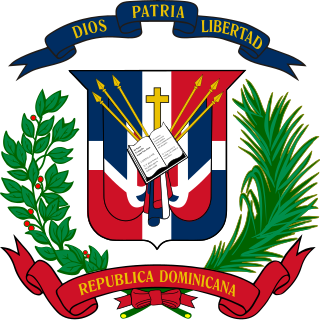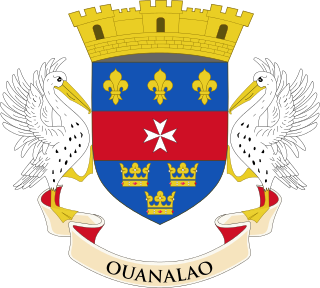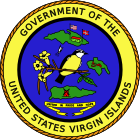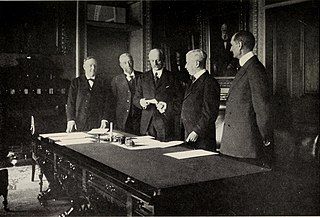
The United States Virgin Islands, officially the Virgin Islands of the United States, is a group of islands in the Caribbean and an unincorporated and organized territory of the United States. The islands are geographically part of the Virgin Islands archipelago and are located in the Leeward Islands of the Lesser Antilles.

Saint Croix is an island in the Caribbean Sea, and a county and constituent district of the United States Virgin Islands (USVI), an unincorporated territory of the United States.

The British West Indies, sometimes abbreviated to the BWI, is a collective term for the British territories in the Caribbean: Anguilla, Bermuda, the Cayman Islands, Turks and Caicos Islands, Montserrat and the British Virgin Islands. Before the decolonization period in the later 1950's and 1960's it included all British colonies in the region, together with two mainland colonies, as part of the British Empire.

This is a United States territorial acquisitions and conquests list, beginning with American independence. Note that this list primarily concerns land the United States of America acquired from other nation-states. Early American expansion was tied to a national concept of manifest destiny.

This is a list of referendums related to the European Union, or referendums related to the European Communities, which were predecessors of the European Union. Since 1972, a total of 48 referendums have been held by EU member states, candidate states, and their territories, with several additional referendums held in countries outside of the EU. The referendums have been held most commonly on the subject of whether to become a member of European Union as part of the accession process, although the EU does not require any candidate country to hold a referendum to approve membership or as part of treaty ratification. Other EU-related referendums have been held on the adoption of the euro and on participation in other EU-related policies.
The Danish West India Company or Danish West India–Guinea Company was a Dano-Norwegian chartered company that exploited colonies in the Danish West Indies.

The Sixty-fourth United States Congress was a meeting of the legislative branch of the United States federal government, composed of the United States Senate and the United States House of Representatives. It met in Washington, DC from March 4, 1915, to March 4, 1917, during the third and fourth years of Woodrow Wilson's presidency. The apportionment of seats in the House of Representatives was based on the Thirteenth Census of the United States in 1910. Both chambers had a Democratic majority.

Henri Konow was a Danish naval officer, vice-admiral, and the last governor of the Danish West Indies, overseeing the transfer of administration to the United States of America following the Treaty of the Danish West Indies in 1916 under which the Kingdom of Denmark sold the islands now named the US Virgin Islands to the United States in exchange for US$25,000,000 in gold.

The West Indies is a region of the North Atlantic Ocean and the Caribbean that includes the island countries and surrounding waters of three major archipelagos: the Greater Antilles, the Lesser Antilles and the Lucayan Archipelago.
A referendum on the sale of the Danish West Indian Islands to the United States of America was held in Denmark on 14 December 1916. The non-binding referendum saw 283,670 vote in favor of the sale of the Danish West Indian Islands and 158,157 against. The residents of the islands were not allowed to vote on the matter, but in an unofficial vote on St. Croix arranged by David Hamilton Jackson, 4,027 voted in favor of the sale and only seven voted against. As a result of the referendum the islands were formally relinquished to the United States by the Treaty of the Danish West Indies on 31 March 1917 as the United States Virgin Islands for a sum of US$25,000,000 in gold.

Denmark–United States relations refers to the current and historical relations between Denmark and the United States. Denmark has an embassy in Washington D.C. The United States has an embassy in Copenhagen. Denmark has a trade office in Atlanta, Georgia. and a consulate general in New York City. Both countries are members of NATO.

The following outline is provided as an overview of and topical guide to the United States Virgin Islands:

Sugar production in the United States Virgin Islands was an important part of the Economy of the United States Virgin Islands for over two hundred years. Long before the islands became part of the United States in 1917, the islands, particular the island of Saint Croix, was exploited by the Danish from the early 18th century and by 1800 over 30,000 acres were under cultivation, earning Saint Croix a reputation as "The Garden of the West Indies". Since the closing of the last sugar factory on Saint Croix in 1966, the industry has become only a memory.

A referendum on transferring ownership to the United States was held on 9 January 1868 on the islands of Sankt Jan and Sankt Thomas, two of three main islands in the Danish West Indies. In the referendum, held by universal male suffrage, voters could approve or reject the outcome of negotiations for the sale of the two islands to the United States for US$7.5 million. The third island, Sankt Croix, was to be sold separately to the US at a later date.

A referendum on annexation by the United States was held in the Dominican Republic on 19 February 1870. The proposal was approved by 99.93% of voters, although turnout was just 30%. However, the United States Senate rejected the annexation on 30 June 1870 with a 28–28 vote.

A referendum on re-integration into France was held in the Swedish colony of Saint Barthélemy in late October 1877. The island has been a colonial possession of Sweden for nearly a century, but following the referendum in which only one person voted against the proposal, it was returned to France the following year.

The 1973 enlargement of the European Communities was the first enlargement of the European Communities (EC), now the European Union (EU). Denmark, Ireland and the United Kingdom (UK) acceded to the EC on 1 January 1973. Gibraltar and Greenland also joined the EC as part of the United Kingdom and Denmark respectively, but the Faroe Islands, the British Overseas Territories and the Crown dependencies of the United Kingdom did not join the EC.

















